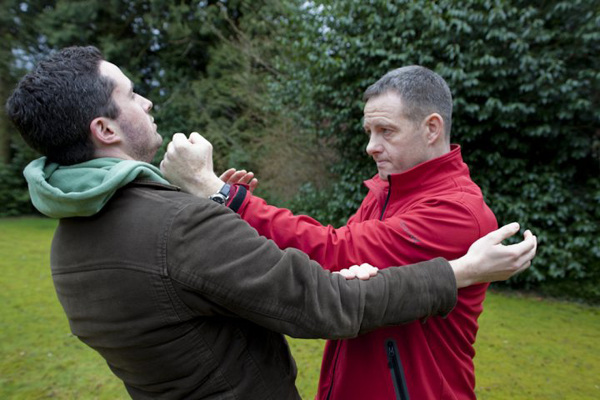
How to Use Force Efficiently
July 15, 2012
“…the position of the elbow, in alignment with shoulder, wrist and knuckles and the application of tension at the moment of impact, helps to achieve a clean transfer of energy into the opponent.”
Alan Gibson
Why does Wing Chun work?
The most basic answer is – physics.
A more sophisticated answer is that any properly executed Wing Chun action has between two and six principles at work which enhance the action’s combat success. The principles used may make the action faster, stronger, safer or create a good position for a second action.
One of the best Wing Chun books out there is Alan Gibson’s Wing Chun: The Works . One of the reasons it is great is that his book is not a lot of photographs of people doing techniques. He understands and illustrates the principles which underlie the techniques.
For instance … I want to be faster. How can I be faster? There are a few Wing Chun answers to this question. One answer is the principle of relaxation.
From the WIng Chun maxims: “Soft and relaxed strength will put your opponent in jeopardy.”
Consider an action, say a punch, in terms of physiology. All movement occurs because of muscular action. Muscles can only contract – they do not “extend.” To extend your arm, your contract your triceps.
You can test this by doing a slightly angled push-up off a door. Just lean up against the door and push off, keeping your biceps relaxed. You can do the “extend you arm” action without any involvement from the biceps.
In fact, if the biceps tense up, this causes a drag on the extension action. When biceps contract, the arm does the opposite of extending. So in order to punch the Wing Chun way, with the elbow down and the arm extending out along the centerline, the biceps should be as relaxed as possible.
And, as Alan Gibson notes in the section of his book titled “Efficient Use of Energy or Force,” this relaxation creates multiple advantages for the fighter. The punch is faster, but since the arm is relaxed, it is easier to change if the arm encounters resistance (an arm thrown up) or misses. We are not over-committed to the action. If the opponent’s arm is encountered, the relaxed punch can detect the direction of the opponent’s action and find the way around.
This is being “sensitive to gaps in your enemy’s attack.”
